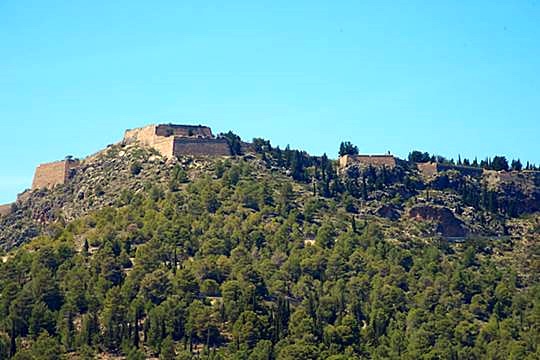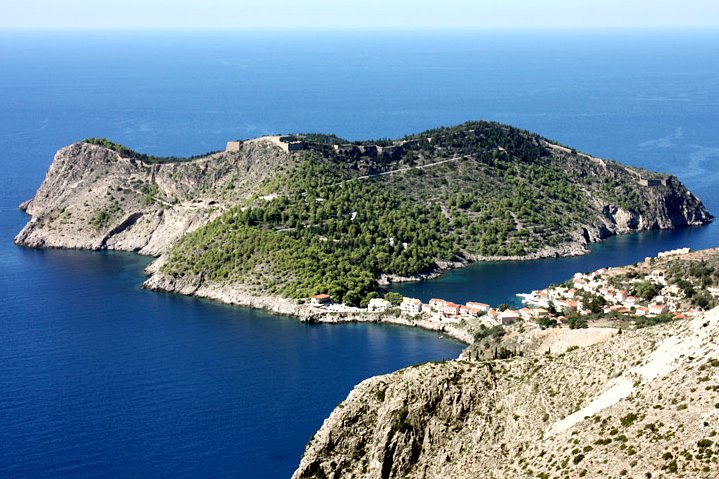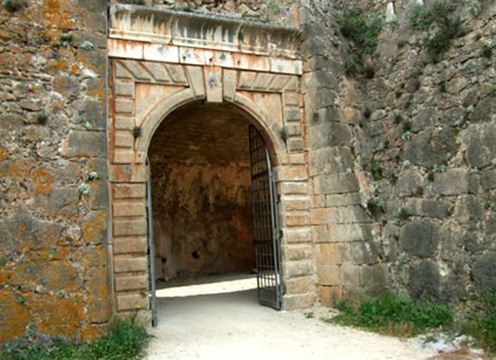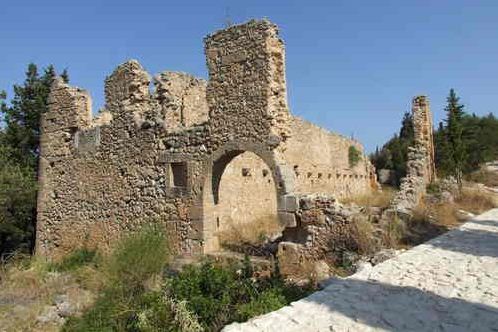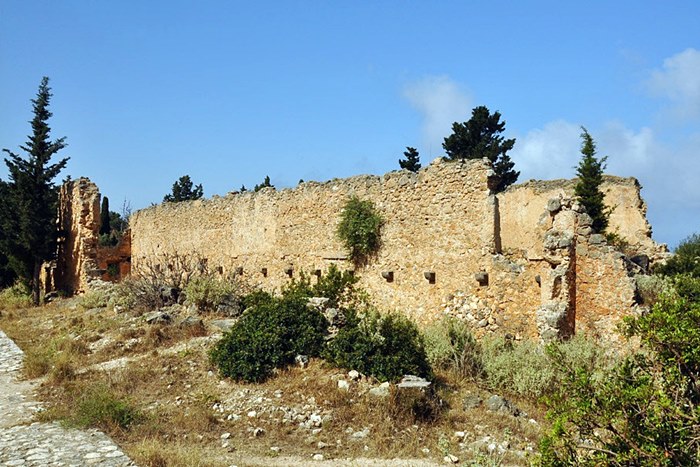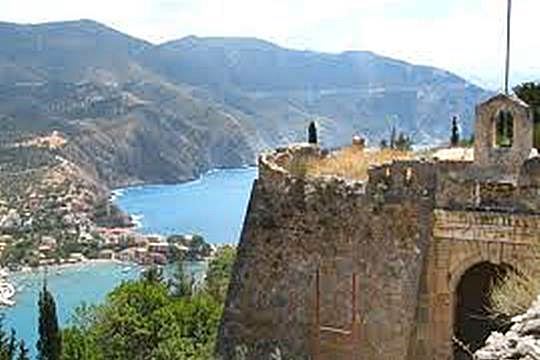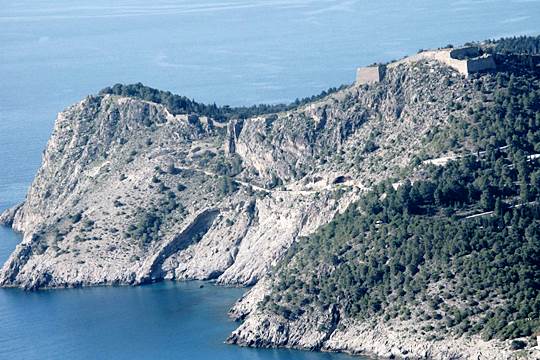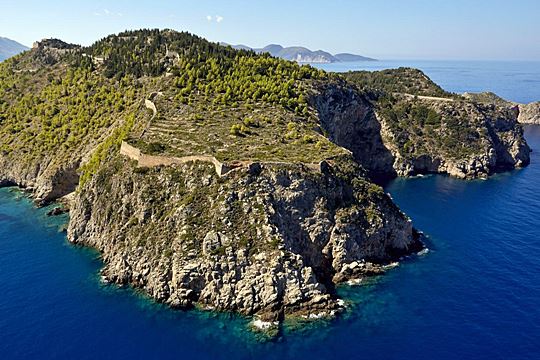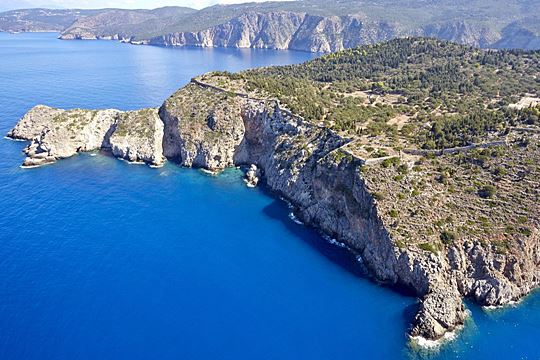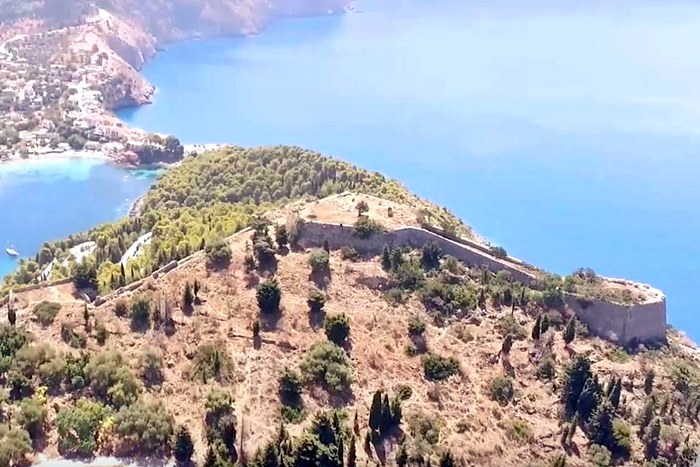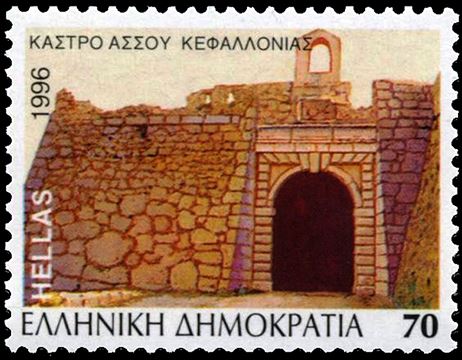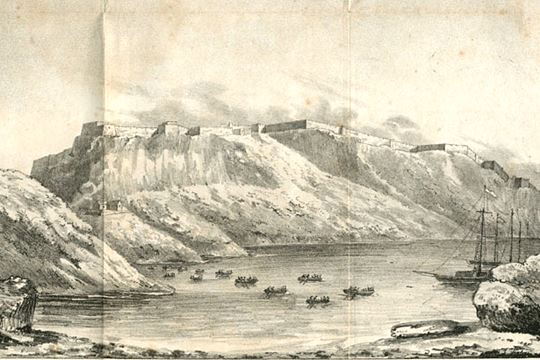Assos, Sami, Cephalonia,Ionian islands
Assos Fortress
| Location: |
| Assos, Kefalonia |
| Region > Prefecture: | 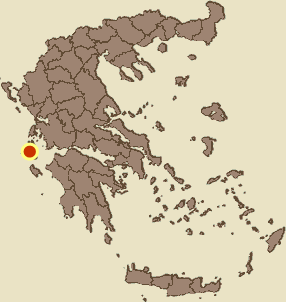 |
| Ionian islands Cephalonia | |
| Municipality > Town: | |
| City of Sami • Assos | |
| Altitude: | |
| Elevation ≈ 50 m |
| Time of Construction | Origin | |
| 1596 | VENETIAN |
|
| Castle Type | Condition | |
| Fortress |
Not Good
|
The castle is on the peninsula of Assos in NW Cefalonia and for many years it was the capital of north Kefalonia and the seat of the Venetian governor (Proveditore)
Its construction, in late-16th century, was a huge and ambitious project by the Venetians who tried to build a fortress-state from scratch.
The project was not successful. The castle did not attract the local population and, moreover, it soon lost it strategic importance.
Nevertheless it is one of the largest castles in Greece.
History
In 1584, a petition had been submitted by the nobles of Kefalonia to the Venetian Senate for the foundation of a new fortress, as the castle of Saint George (the other castle of Kefalonia) could not defend the whole island against the Turkish threat and the pirate raids.
The construction started in 1593 and the fortifications were completed by 1596. The Venetians had big plans for the place and wanted to found a new powerful fortress-state from scratch. But this did not happen.
Assos never attracted a large population. Locals were reluctant to move in. Although this big, strong castle was built on a naturally impregnable peninsula, its location also meant that under attack, its vital supplies could also be cut off. And the biggest problem was water. The hill does not have natural sources. Large water tanks were constructed but that was not an ideal solution.
Assos remained a huge fort with a tiny settlement inside. Inevitably, the grander city plans were scaled down. Assos became the capital of the northern part of Kefalonia and a building was constructed to serve the needs of the local government. But the outcome was far from the initial vision.
In 1684, the Venetians achieved to take Lefkas from the Turks and the Assos castle lost its strategic importance.
In 1757, the Venetians, in an era that piracy and Turks were no longer serious threats, founded Argostoli which quickly became the center of the island. Assos lost more significance.
It remained, however, the seat of the Venetian Proveditore until 1797 at the end of the Venetian rule in Kefalonia. Assos and Kefalonia were occupied then by French forces for 2 years (1797-1799).
In 1822, 1700 refugees from Souli were accepted to stay in the Assos fortress. After the union of the seven Ionian islands with the rest of Greece in 1865, a small community remained in Assos.
For the next century, Assos continued to be a fortress without a military role. In the late 1920’s, a prison farm was set up there which after the WW II hosted political prisoners.
The Ionian islands were devastated by a big earthquake in 1953. After that, most of the people of the castle left and the prison was closed. The 1961 census counted 6 people in the fortress. The last inhabitant left in 1963.
Structure, Fortification & Buildings
The length of the walls of the castle is 2000 meters and the area inside is 44,000 sq. meters.
Within the ruins, one can find some interesting structures, such as the small church of Agios Markos and the house of the Venetian High Commissioner. A little lower down the hill there is another chapel dedicated to Prophet Elias (1888) with a beautiful wooden carved iconostasis.
Two of the castle's original four gates are still standing. The main gate is the most interesting part of the castle.
| First entry in Kastrologos: | October 2012 |
Sources
- Video by the user
G Traveller Φρούριο Άσσου - Assos Fortress
|
|
| Access |
|---|
| Approach to the monument: |
| Assos is 36km from Argostoli, Cefalonia. From there, the castle is easily accessible. |
| Entrance: |
| Open daily. The entrance is free. |
| Other castles around |
|---|
| Vardiola of Atheras |
| Basilica of Fiscardo |
| Vardiola of Koutsoupia |
| Bastion of Loutsa |
| Kasteli of Paliki |
| Vardiola at Piniatoros’ property |



